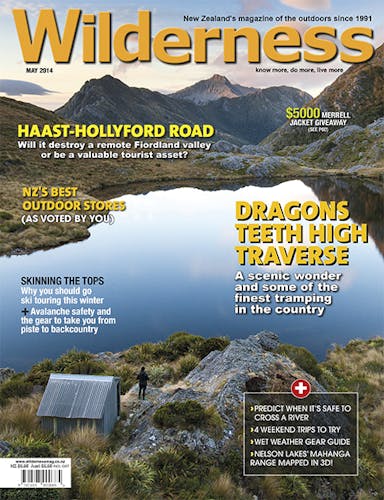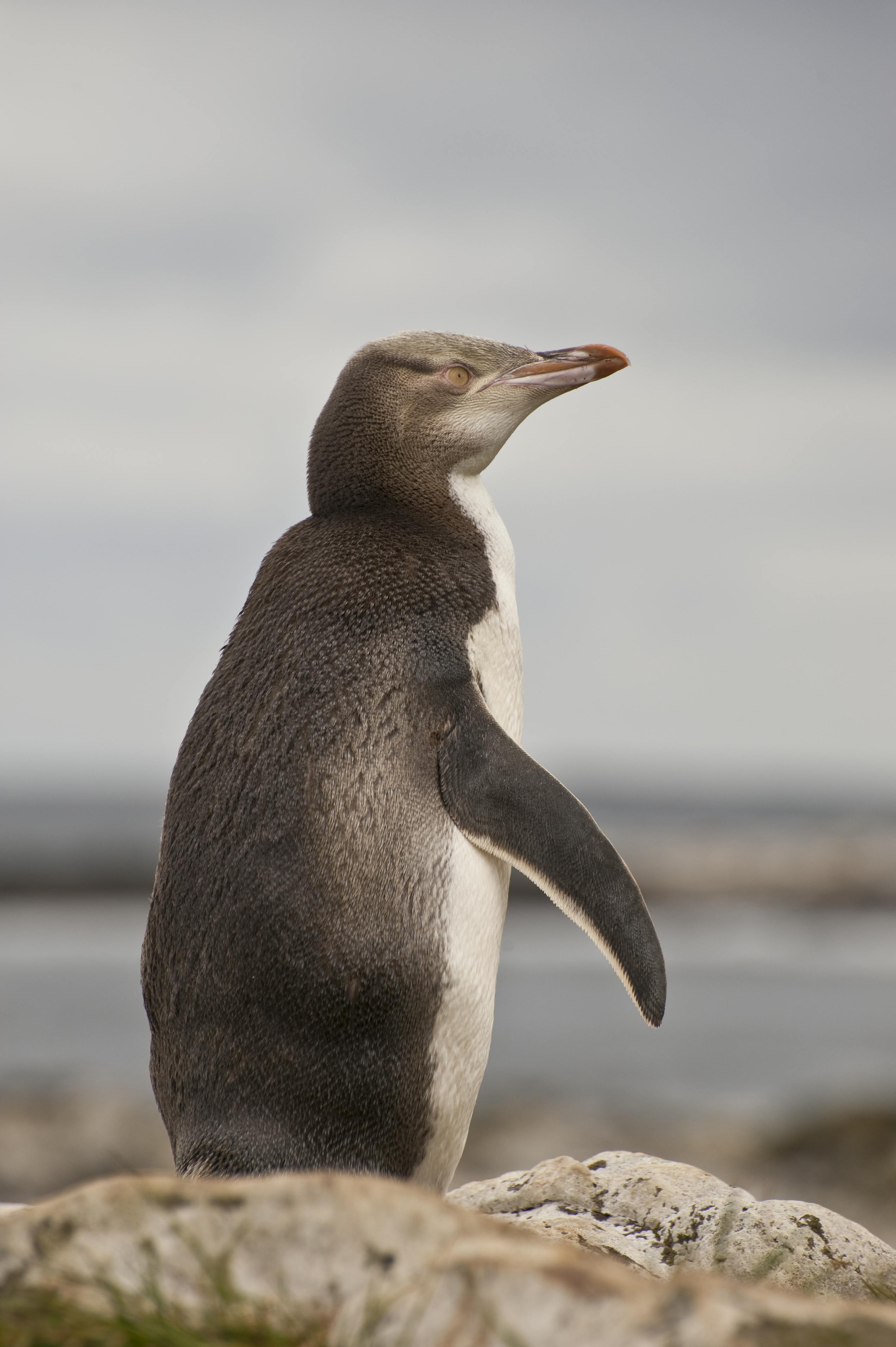Three places to view the rare yellow-eyed penguin
The penguin stood poised, flipper partially out-stretched, its yellow eye alert but showing no sign of alarm. Nearby, in matching pose, stood its mate. From a vantage point no more than five metres away, we could observe their sleek plumage; a brown-grey coat with a white-fronted vest, and a trim of cream around the flipper. That dense plumage, impenetrable to water, along with a thick layer of fat, keeps these birds warm in the cool waters of the Southern Ocean. And the yellow eye and matching band? Apparently caused by a chemical called carotene.
Yellow-eyed penguins (Megadypes antipodes) are endemic to New Zealand and its outer lying islands, and figure among the least populous penguins of the world. But they are possibly not – as often claimed – our rarest penguin (that honour may well go to the Fiordland crested penguin, although a full census of this latter species still awaits). Yellow-eyed penguins are, however, rarer on mainland New Zealand with the subantarctic islands being their stronghold.
New Zealand Birds online (nzbirdsonline.org.nz) puts the total yellow-eye population at about 1700 breeding pairs, with the majority on Auckland and Campbell islands. A small number exist on Banks Peninsula, and groups occur south of here along the east coast, but the largest mainland populations occur on the Otago Peninsula, in the Catlins (about 600 pairs) and on Stewart Island (180 or more pairs).
Hoiho, their Maori name, means ‘noise shouter’, reflecting their sometimes harsh call, but this does not suggest how shy the birds usually are. Less sociable than other penguin species, they are often solitary, teaming up only during the mating season.
They nest on land, generally in forest or scrub, and can wander as far as a kilometre from the shore. Despite having short legs, the birds can waddle up surprisingly steep slopes, as well as negotiate tricky bouldery landings in the surf. Like most penguins, however, it is in the sea that they best show mastery of their environment, diving to depths of 140m or more.
Unfortunately, the birds suffer all sorts of assaults on mainland New Zealand; cats, ferrets and stoats decimate chicks, while dogs have been known to kill adults. They have to deal with roads and vehicles in places, and habitat loss is a continual threat. Even in a reserve they may not be safe, as proved when fire killed 60 penguins at a Catlins reserve in 1995.
Happily, efforts from conservation and community groups help safeguard the bird’s habitat at various locations through trapping, fencing and tree planting. And on the predator-free subantarctic islands, nature reserve status helps ensure their stronghold remains a wild place where the impacts of humans are almost non-existent.
Trampers tackling Rakiura’s Northwest Circuit may see penguins on Stewart Island. Otherwise, there are good places to see them at various locations on the Otago Peninsula and Catlins. Respect the penguins by keeping your distance, using viewing hides where they are located. At other sites, back off if the bird seems perturbed.
– Shaun Barnett
Sandfly Bay, Otago Peninsula, Dunedin
This wonderful Otago beach is a wildlife haven not only for yellow-eyed penguins but also Hooker sealions. From the Sandymount Road car park, a 30-minute walk through the dunes leads to a viewing hide near the sea.
Nugget Point Reserve, Catlins
Famous for its lighthouse and rocky offshore islets, Nugget Point also offers a chance to witness yellow-eyed penguins emerging from the sea after feeding during the day. From The Nuggets Road, a short track leads to a hide overlooking the shore at Roaring Bay.
Enderby Island, Auckland Islands Nature Reserve
This ultimate yellow-eyed penguin spotting location is a good two days by boat from Bluff. Only officially approved tours may land on the island. The penguins frequent the shore around the coast and can also be observed in the rata forest that grows in stunted form around parts of the shore.







